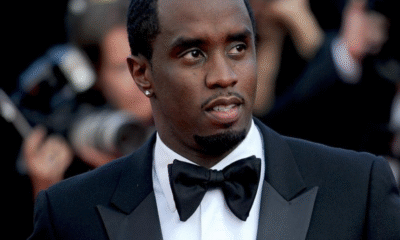Real Estate
Why ‘build to rent’ communities are booming in Houston
Houston is experiencing a significant surge in build-to-rent (BTR) communities, emerging as one of the top markets for this innovative housing solution in the United States. As of 2025, the city ranks 5th nationwide in the construction of new single-family homes for rent, with 4,613 units expected to be built this year alone.
Driving Factors
Several key factors are fueling this boom:
- Affordability Challenges: With Houston’s home prices soaring 43% between 2018 and 2023, many residents find themselves priced out of traditional homeownership. BTR communities offer a more affordable alternative, allowing tenants to save around $1,000 per month compared to buying a starter home.

- Economic Growth: Houston’s thriving job market and business-friendly environment make it an attractive destination for professionals seeking flexible living arrangements.
- Demographic Shifts: Millennials and Gen Z, in particular, are drawn to BTR communities as they navigate student loan debt and seek to avoid high property taxes while maintaining proximity to urban centers.
- Space and Amenities: BTR homes often provide larger layouts, premium finishes, and access to community amenities like pools and fitness centers, offering a blend of apartment convenience and single-family home comfort.
The BTR Landscape
Houston’s BTR sector has seen remarkable growth:
- Over 6,000 units were delivered across the city in 2023.
- An additional 4,836 units are under construction, slated for completion in 2026.
- Cypress leads with 1,007 new rental units, while other areas like Rosharon (922 units) and Hockley (466 units) also see significant development.

Impact on the Housing Market
The rise of BTR communities is reshaping Houston’s rental landscape:
- Flexibility for Residents: BTR offers the perfect balance between renting and homeownership, catering to those seeking stability without long-term commitments.
- Investment Opportunity: Developers and investors are capitalizing on the growing demand, with companies like Camden Development and McLain Companies leading major projects.
- Suburban Expansion: As urban areas become more congested and expensive, BTR properties in suburban locations offer more space and affordability while maintaining connectivity to city centers.
Looking Ahead
As Houston continues to grow and evolve, BTR communities are poised to play an increasingly important role in the city’s housing ecosystem. With over 21,800 BTR units planned or under construction across Texas in 2025, this trend shows no signs of slowing down.
While BTR communities offer a solution to current housing challenges, their long-term impact on homeownership rates and community dynamics remains to be seen. As the market matures, it will be crucial to monitor how these developments integrate into Houston’s diverse neighborhoods and affect overall housing affordability.

Bolanle Media covers a wide range of topics, including film, technology, and culture. Our team creates easy-to-understand articles and news pieces that keep readers informed about the latest trends and events. If you’re looking for press coverage or want to share your story with a wider audience, we’d love to hear from you! Contact us today to discuss how we can help bring your news to life
News
50-Year Mortgages: A Game Changer or a Debt Trap?

A 50-year mortgage, as proposed recently and highlighted in Trump’s announcement, offers a striking trade-off between lower monthly payments and much higher overall costs. It could help more buyers qualify for mortgages by reducing payments, making homeownership more accessible especially in high-cost areas. Additionally, it could allow buyers to afford more expensive homes initially and provide flexibility if incomes rise over time.

However, the downsides are significant. The longer term means borrowers pay almost double the total interest compared to a 30-year mortgage, dramatically increasing lifelong debt burden. Equity builds very slowly in the early years since most payments go to interest, putting homeowners at risk if property values fall. The mortgage could extend into retirement years, complicating financial stability for older borrowers. Additionally, lenders may charge higher interest rates to offset the risk of such long-term loans. There’s also concern that increasing borrowing power without increasing housing supply will just inflate home prices further, worsening affordability in the long run.
Experts generally view the 50-year mortgage as more of a short-term relief tactic rather than a fundamental solution to housing affordability. It may help some buyers get into homes sooner but carries risks of prolonged debt, higher costs, and slower wealth accumulation through home equity. Proper financial counseling and consideration of individual goals are essential before opting for such a loan. Thus, while a 50-year mortgage can be a game changer for monthly cash flow, it has the real potential to become a debt trap if buyers do not carefully weigh the long-term implications.

News
Ghislaine Maxwell Ready to Testify on Epstein’s Client List

Ghislaine Maxwell Signals Willingness to Speak Before Congress
A new chapter may be opening in the continuing saga surrounding Jeffrey Epstein, as Ghislaine Maxwell—once the financier’s closest confidante—has reportedly indicated her willingness to testify before Congress about the much-rumored “Epstein client list.” According to a source cited by the Daily Mail, Maxwell is prepared to provide details if asked, potentially offering answers to questions that have circulated since Epstein’s arrest and subsequent death in 2019.

The Background: Maxwell’s Involvement and Conviction
Maxwell was convicted in 2022 for her critical role in enabling and participating in Epstein’s illicit activities, which spanned multiple locations including New York, Palm Beach, and a private Caribbean island. Currently serving a 20-year federal sentence in Tallahassee, Florida, she has long been viewed as a key figure behind Epstein’s inner circle, privy to people and secrets that have yet to be made public.
Congressional Testimony: Possibility or Speculation?
Despite the tantalizing claim that Maxwell is “willing and eager” to testify, no congressional committee has formally requested her appearance. The client list—often referenced in media and political circles as proof of high-profile involvement—remains elusive and unverified. Yet, the possibility of Maxwell testifying has reignited public demands for transparency and accountability, especially given the lack of closure for many of Epstein’s victims.
Legal and Political Ramifications
Legal experts have weighed in on the impact such testimony could bring. Alan Dershowitz, Epstein’s former lawyer, underlined in a recent interview that if Maxwell did appear before Congress and implicated prominent figures—including any political candidates—it could have dramatic ramifications, potentially even affecting discussions about presidential pardons. Dershowitz also emphasized that Maxwell’s sentence is “way too long” and expressed hope for its commutation, portraying her as both a perpetrator and a victim.

Lingering Questions About Epstein’s Death
Questions persist regarding Epstein’s death in a New York jail in 2019. Recent discussions have focused on missing security footage and potential lapses in prison protocol, sparking renewed debates about possible foul play or institutional negligence.
The Broader Impact: Will Testimony Change the Narrative?
While no invitation from Congress has materialized, the idea of Maxwell testifying continues to capture the attention of both the public and the press. For the many individuals impacted by Epstein’s crimes, Maxwell’s potential revelations carry both hope for long-awaited answers and concern over whether justice will truly be served.
With the Epstein investigation seemingly at a standstill yet still alive in the headlines, all eyes remain on whether Ghislaine Maxwell will ever get the chance to tell what she knows under oath—and if she does, what names and stories might finally emerge from the shadows.
Business
Pros and Cons of the Big Beautiful Bill

The “Big Beautiful Bill” (officially the One Big Beautiful Bill Act) is a sweeping tax and spending package passed in July 2025. It makes permanent many Trump-era tax cuts, introduces new tax breaks for working Americans, and enacts deep cuts to federal safety-net programs. The bill also increases spending on border security and defense, while rolling back clean energy incentives and tightening requirements for social programs.

Pros
1. Tax Relief for Middle and Working-Class Families
- Makes the 2017 Trump tax cuts permanent, preventing a scheduled tax hike for many Americans.
- Introduces new tax breaks: no federal income tax on tips and overtime pay (for incomes under $150,000, with limits).
- Doubles the Child Tax Credit to $2,500 per child through 2028.
- Temporarily raises the SALT (state and local tax) deduction cap to $40,000.
- Creates “Trump Accounts”: tax-exempt savings accounts for newborns.
2. Support for Small Businesses and Economic Growth
- Makes the small business deduction permanent, supporting Main Street businesses.
- Expands expensing for investment in short-lived assets and domestic R&D, which is considered pro-growth.
3. Increased Spending on Security and Infrastructure
- Allocates $175 billion for border security and $160 billion for defense, the highest peacetime military budget in U.S. history.
- Provides $12.5 billion for air traffic control modernization.
4. Simplification and Fairness in the Tax Code
- Expands the Earned Income Tax Credit (EITC) and raises marginal rates on individuals earning over $400,000.
- Closes various deductions and loopholes, especially those benefiting private equity and multinational corporations.

Cons
1. Deep Cuts to Social Safety Net Programs
- Cuts Medicaid by approximately $930 billion and imposes new work requirements, which could leave millions without health insurance.
- Tightens eligibility and work requirements for SNAP (food assistance), potentially removing benefits from many low-income families.
- Rolls back student loan forgiveness and repeals Biden-era subsidies.
2. Increases the Federal Deficit
- The bill is projected to add $3.3–4 trillion to the federal deficit over 10 years.
- Critics argue that the combination of tax cuts and increased spending is fiscally irresponsible.
3. Benefits Skewed Toward the Wealthy
- The largest income gains go to affluent Americans, with top earners seeing significant after-tax increases.
- Critics describe the bill as the largest upward transfer of wealth in recent U.S. history.
4. Rollback of Clean Energy and Climate Incentives
- Eliminates tax credits for electric vehicles and solar energy by the end of 2025.
- Imposes stricter requirements for renewable energy developers, which could lead to job losses and higher electricity costs.

5. Potential Harm to Healthcare and Rural Hospitals
- Reduces funding for hospitals serving Medicaid recipients, increasing uncompensated care costs and threatening rural healthcare access.
- Tightens verification for federal premium subsidies under the Affordable Care Act, risking coverage for some middle-income Americans.
6. Public and Political Backlash
- The bill is unpopular in public polls and is seen as a political risk for its supporters.
- Critics warn it will widen the gap between rich and poor and reverse progress on alternative energy and healthcare.
Summary Table
| Pros | Cons |
|---|---|
| Permanent middle-class tax cuts | Deep Medicaid and SNAP cuts |
| No tax on tips/overtime for most workers | Millions may lose health insurance |
| Doubled Child Tax Credit | Adds $3.3–4T to deficit |
| Small business support | Benefits skewed to wealthy |
| Increased border/defense spending | Clean energy incentives eliminated |
| Simplifies some tax provisions | Threatens rural hospitals |
| Public backlash, political risk |
In summary:
The Big Beautiful Bill delivers significant tax relief and new benefits for many working and middle-class Americans, but it does so at the cost of deep cuts to social programs, a higher federal deficit, and reduced support for clean energy and healthcare. The bill is highly polarizing, with supporters touting its pro-growth and pro-family provisions, while critics warn of increased inequality and harm to vulnerable populations.

 News4 weeks ago
News4 weeks agoDiddy Wakes Up to Knife in Prison Attack

 Business4 weeks ago
Business4 weeks agoHarvard Grads Jobless? How AI & Ghost Jobs Broke Hiring

 Entertainment2 weeks ago
Entertainment2 weeks agoAfter Party: Festival Winner for Best Romantic Short

 News1 week ago
News1 week agoCamp Wackapoo – Rise of Glog Takes Center Stage

 Entertainment1 week ago
Entertainment1 week agoFrancisco Ramos Takes Top Mockumentary Award at Houston Comedy Film Festival

 Politics2 weeks ago
Politics2 weeks agoMamdani’s Victory Triggers Nationwide Concern Over New York’s Future

 Politics2 weeks ago
Politics2 weeks agoTrump’s $2,000 Tariff Dividend Plan: Who Gets Paid?

 News1 week ago
News1 week ago50-Year Mortgages: A Game Changer or a Debt Trap?






























